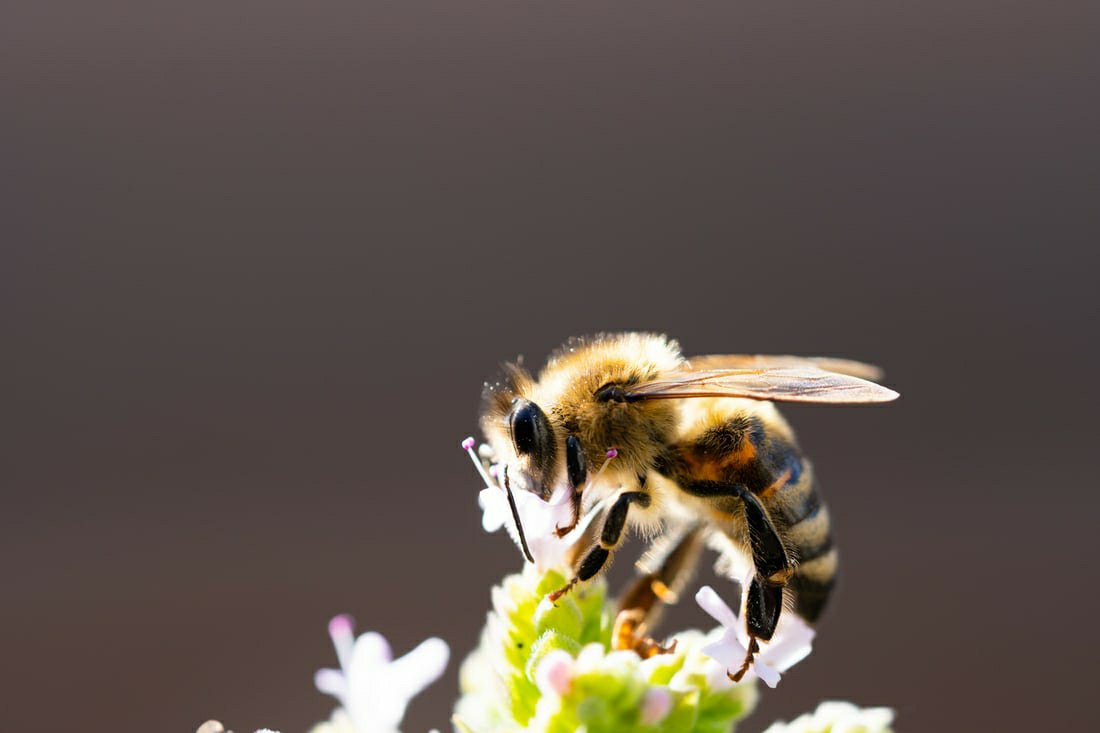Symbiosis involves interaction between two different organisms living in close physical association. It denotes a mutually beneficial relationship between different people or groups or species.
Symbiotic relationships are essential to many organisms and ecosystems, and they provide a balance that can only be achieved by working together. There are three basic types of symbiosis: mutualism, commensalism, and parasitism.
Mutualism is a symbiotic relationship in which both species benefit. Bees and flowers have a mutualistic relationship as well. Bees get the nectar they need to make honey by traveling between flowers. The bee brings pollen from one plant to another, resulting in pollination.

Commensalism is a symbiotic relationship in which one species benefits while the other species is not affected. One species typically uses the other for a purpose other than food. Tree frogs using plants for protection, golden jackals, once they have been expelled from a pack, trailing a tiger to feed on the remains of its kills, goby fish living on other sea animals, changing color to blend in with the host, thus gaining protection from predators, are all examples of commensalism
Parasitism is a symbiotic relationship in which one species (the parasite) benefits while the other species (the host) is harmed. There are many types of parasitic fungi that will attack various plants, fruits, vegetables, and even animals.
In the Bible, we see precedents for all these three types of symbiotic relationships existing, especially in the church.

In Acts 4:32 we witness mutualism when we read that All the believers were one in heart and mind. No one claimed that any of their possessions was their own, but they shared everything they had.
Israel was instructed by the laws of God to care for the widow and the orphan, the poor and the needy as well as for the foreigner and alien who.lived among them. The Church also lived by this principle, a clear demonstration of commensalism.
Apostles Paul, Peter and Jude warn of parasitical people in the church who are blots and blemishes in their feasts, people who use and misuse the goodness of others in the Body of Christ for their own needs. In the Old Testament too, God warns the shepherds through the prophet Ezekiel for not searching for His flock but caring for themselves rather than for His flock and living off the flock (Eze 34).
I believe the best illustration of symbiosis occurs in II Cor 8 & 9 when the Apostle Paul commends the Macedonian churches for their generosity towards other churches in need and recommends that the Corinthian/Achaian churches follow suit. He points out the cycle of mutual benefit that results from such caring and sharing when he writes This service that you perform is not only supplying the needs of the Lord’s people but is also overflowing in many expressions of thanks to God. Because of the service by which you have proved yourselves, others will praise God for the obedience that accompanies your confession of the gospel of Christ, and for your generosity in sharing with them and with everyone else. And in their prayers for you their hearts will go out to you, because of the surpassing grace God has given you. Thanks be to God for his indescribable gift!
(II Cor 9:12-15).

In these days of Covid, churches can follow this principle and demonstrate community concern and consciousness to a watching world through the acts of positive symbiosis. Not just commensalism symbolized in caring for those adversely affected, but also in partnerships of beneficial mutualism.
An example of such a relationship would be for larger churches with extensive technological resources to help the smaller ones, who lack such amenities, use their facilities to record and propagate their online services. The prayers of the latter will surely bless the efforts of the former and God’s love will be exhibited in a very practical way in a greedy and selfish society, making hearts sensitive to receive the gospel!
Churches do reach out to those in the community being hurt by the pandemic, such as migrant workers or those who have lost their income. However, church communities haven’t yet begun helping one another enough to warrant a community impact that will open doors and hearts for the gospel. Unless a community cooperation and coexistence is perceived, people around will never understand Christ’s love for the lost.
A city church adopting a struggling village church, serving it in times of need will go a long way in showing solidarity between members of the same family of God to those around. Just as the conduct of individuals and families is to adorn the gospel, the attitude and deportment of churches towards their needy brother/sister churches would provide context for the content of the gospel.
Not just churches, but Christian businesses and businessmen/women can also adopt and emulate the Biblical model of mutuality or commensality. This is not the time to behave like vultures to swallow up others because of the opportunity for acquisition, but rather exhibit charity in every way.
God’s way is for the mountain to be used to fill the valley so that a highway be made for all. He had this in mind when He told His people to care for the poor: Give generously to them and do so without a grudging heart; then because of this the Lord your God will bless you in all your work and in everything you put your hand to. There will always be poor people in the land. Therefore I command you to be openhanded toward your fellow Israelites who are poor and needy in your land. Deut 15:10-11
Symbiotic relationships are showcased in nature to clue in us to God’s plan for mankind, as individuals and communities.
Let’s not be cunning as jackals or ravenous as wolves, but pure as doves and innocent as lambs, especially in this pandemic crisis!
You can read about a community process in: https://www.patheos.com/blogs/spicedmulling/2023/02/efficacy-and-role-of-tales-and-talk-in-community-communion-and-communication/
